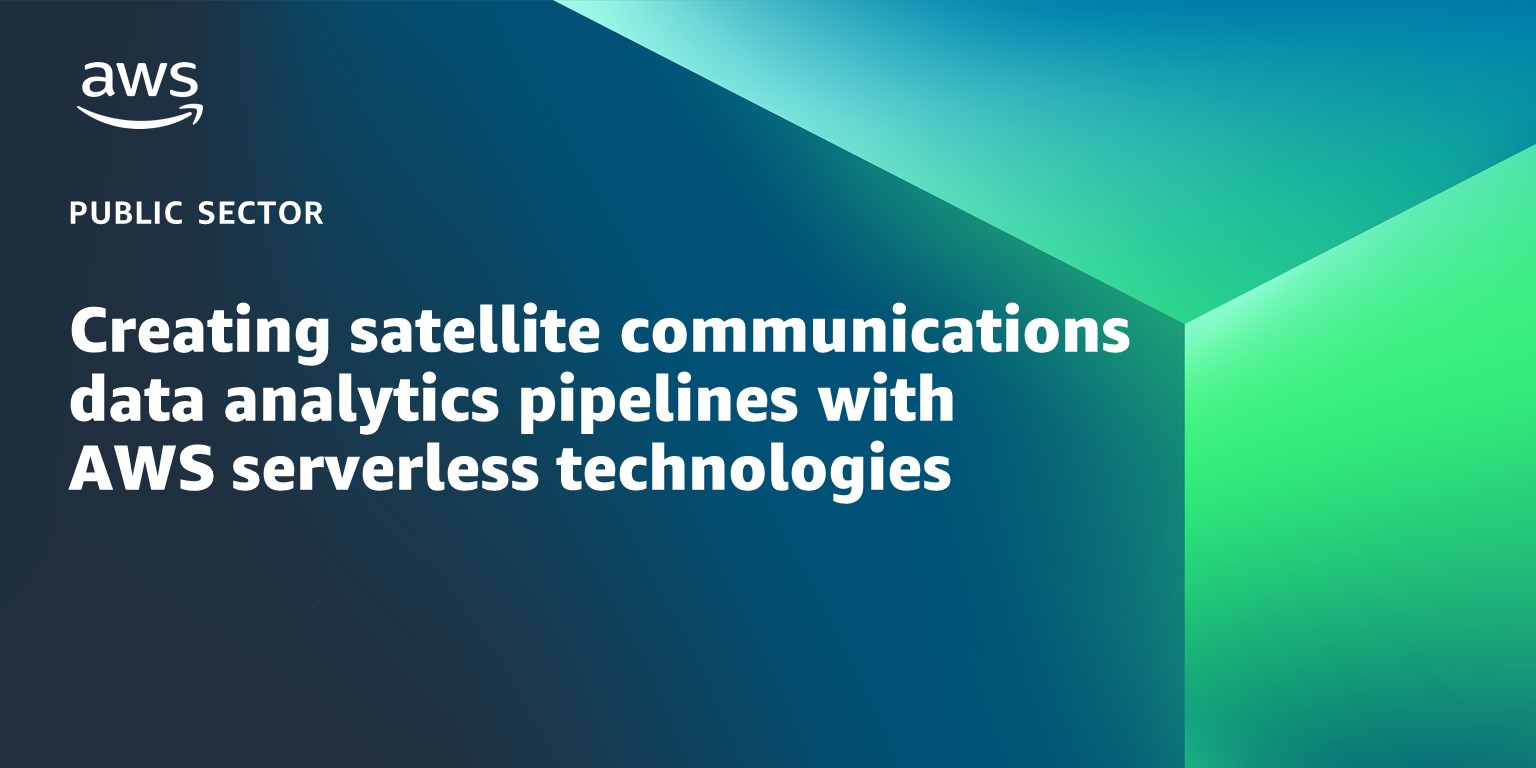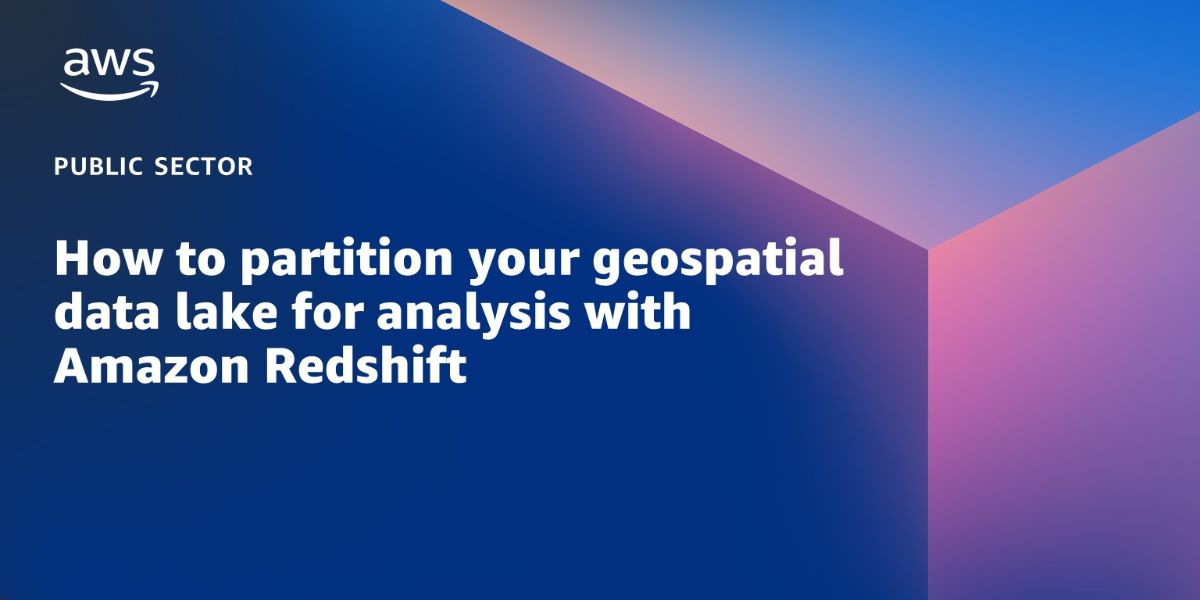AWS Public Sector Blog
Tag: geospatial data
Creating satellite communications data analytics pipelines with AWS serverless technologies
Satellite communications (satcom) networks typically offer a rich set of performance metrics, such as signal-to-noise ratio (SNR) and bandwidth delivered by remote terminals on land, sea, or air. Customers can use performance metrics to detect network and terminal anomalies and identify trends to impact business outcomes. This walkthrough presents an approach using serverless resources from AWS to build satcom control plane analytics pipelines. The presented architecture transforms the data to extract key performance indicators (KPIs) of interest, renders them in business intelligence tools, and applies machine learning (ML) to flag unexpected SNR deviations.
Supporting health equity with data insights and visualizations using AWS
In this guest post, Ajay K. Gupta, co-founder and chief executive officer (CEO) of HSR.health, explains how healthcare technology (HealthTech) nonprofit HSR.health uses geospatial artificial intelligence and AWS to develop solutions that support improvements in healthcare and health equity around the world.
34 new or updated datasets on the Registry of Open Data: New data for land use, Alzheimer’s Disease, and more
The AWS Open Data Sponsorship Program makes high-value, cloud-optimized datasets publicly available on AWS. This quarter, AWS released 34 new or updated datasets from Impact Observatory, The Allen Institute for Brain Science, Common Screens, and others, which are available now on the Registry of Open Data in the following categories.
22 new or updated open datasets on AWS: New polar satellite data, blockchain data, and more
The AWS Open Data Sponsorship Program makes high-value, cloud-optimized datasets publicly available on AWS. The full list of publicly available datasets are on the Registry of Open Data on AWS and are now also discoverable on AWS Data Exchange. This quarter, AWS released 22 new or updated datasets including Amazonia-1 imagery, Bitcoin and Ethereum data, and elevation data over the Arctic and Antarctica. Check out some highlights.
How to partition your geospatial data lake for analysis with Amazon Redshift
Data lakes are becoming increasingly common in many different workloads, and geospatial is no exception. In 2021, Amazon Web Services (AWS) announced geography and geohash support on Amazon Redshift, so geospatial analysts have the capability to quickly and efficiently query geohashed vector data in Amazon Simple Storage Service (Amazon S3). In this blog post, I walk through how to use geohashing with Amazon Redshift partitioning for quick and efficient geospatial data access, analysis, and transformation in your data lake.
OpenFold, OpenAlex catalog of scholarly publications, and Capella Space satellite data: The latest open data on AWS
The AWS Open Data Sponsorship Program makes high-value, cloud-optimized datasets publicly available on AWS. Our full list of publicly available datasets are on the Registry of Open Data on AWS and are now also discoverable on AWS Data Exchange. This quarter, we released 15 new or updated datasets including OpenFold, OpenAlex, and radar data from Capella Space. Check out some highlights from the new or updated datasets.
Enhance operational agility and decision advantage with AWS Snowball Edge
In a data-dependent world, success belongs to the side with decision advantage: the ability to acquire data and make sense of a complex and adaptive environment, and act smarter and faster than the competition. Understanding global environments requires more than just more data – it requires live two- and three-dimensional maps, new support tools, improved processes, seamless connectivity, and better collaboration that can scale to the needs of the environment. This blog post explores how to address challenges of big data and accelerate time to data insights with machine learning with AWS Snowball Edge device deployment at the edge.
Managing the world’s natural resources with earth observation
With increasing pressure from climate change, loss of biodiversity, and demand for natural resources from already stressed ecosystems, it has become essential to understand and address environmental changes by making sustainable land use decisions with the latest and most accurate data. As part of the Amazon Sustainability Data Initiative (ASDI), AWS invited Joe Sexton, chief scientist and co-founder of terraPulse, to share how AWS technologies and open data are supporting terraPulse’s efforts to provide accurate and up-to-date information on the world’s changing ecosystems.
How Natural Resources Canada migrated petabytes of geospatial data to the cloud
Since 1971, Canada Centre for Mapping and Earth Observation (CCMEO) at Natural Resources Canada (NRCan) has accumulated an Earth observation (EO) data archive in excess of two petabytes (PB). NRCan wanted to modernize its geospatial offerings at a faster pace, so they turned to the AWS Snow Family on AWS to migrate their large volume of data.
How to deliver performant GIS desktop applications with Amazon AppStream 2.0
Geospatial datasets are increasingly large, reaching terabyte and even petabyte scale, which can cause many challenges for geospatial analysts and educators–but Amazon AppStream 2.0 can provide some solutions. In this blog post, we walk through how to deploy QGIS, a no cost, open-source geospatial information system (GIS) application used by geospatial analysts, in Amazon AppStream 2.0. We also load an example dataset to demonstrate how desktop GIS application users can access large, cloud-hosted geospatial datasets with high performance by keeping the data and compute components together on the cloud, and streaming the desktop application instead of downloading the data itself.









